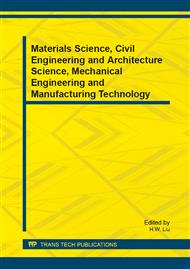p.1419
p.1426
p.1430
p.1434
p.1439
p.1444
p.1447
p.1454
p.1458
Research on Hyperpaths in the Urban Rail Transit Network
Abstract:
Hyperpaths enumeration is one of the basic procedures in many traffic planning issues. As a result of its distinctive structure, hyperpaths in Urban Rail Transit Network (URTN) are different from those in road network. Typically, one may never visit a station more than once and would never transfer from one line to another that has been visited in a loopless URTN, meaning that stations a hyperpath traversed cannot be repeated, neither do lines in loopless networks. This paper studies the relationships between feasible path and the shortest path in terms of travel costs. In this paper, a new definition of hyperpath in URTN is proposed and a new algorithm based on the breadth first searching (BFS) method is presented to enumerate the hyperpaths. The algorithm can safely avoid hyperpath omission and can even be applied in networks containing loops as well. The influence of parameters on hyperpaths is studied by experimentally finding hyperpaths in the subway network in Beijing. A group of suggested parameter pairs are then given. Finally, a numerical experiment is used to illustrate the validity of the proposed algorithm. The results imply the significance of the convergence of the BFS algorithm which can be used to search hyperpaths in large scale URTN even with loop.
Info:
Periodical:
Pages:
1439-1443
Citation:
Online since:
January 2014
Authors:
Keywords:
Price:
Сopyright:
© 2014 Trans Tech Publications Ltd. All Rights Reserved
Share:
Citation:


